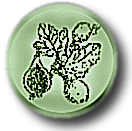Subsystem: Uptake of selenate and selenite
This subsystem's description is:
Genes involved in the uptake of selenium oxyanions, for later biological detoxification.
For more information, please check out the description and the additional notes tabs, below
| Literature References | A probable link between the DedA protein and resistance to selenite. Ledgham F Research in microbiology 2005 Apr | 15808941 | Single transporter for sulfate, selenate, and selenite in Escherichia coli K-12. Lindblow-Kull C Journal of bacteriology 1985 Sep | 3897189 | Effect of selenite on growth and protein synthesis in the phototrophic bacterium Rhodobacter sphaeroides. Bebien M Applied and environmental microbiology 2001 Oct | 11571140 | A novel selenite- and tellurite-inducible gene in Escherichia coli. Guzzo J Applied and environmental microbiology 2000 Nov | 11055951 | Involvement of a putative molybdenum enzyme in the reduction of selenate by Escherichia coli. Bébien M Microbiology (Reading, England) 2002 Dec | 12480890 |
|---|
| Diagram | Functional Roles | Subsystem Spreadsheet | Description | Additional Notes | |||||||||
Oops! We thought there was a diagram here, but we can't find it. Sorry
Genes involved in the uptake of selenium oxyanions, for later biological detoxification. Selenium, a naturally occurring element, is essential for biological systems at low concentrations but toxic at higher levels. In aerated environments, selenium predominantly occurs in its oxidized forms, selenate and selenite. High concentrations of selenium oxyanions are highly toxic and mutagenic. Many organisms therefore take up selenate and/or selenite from their environment, and detoxify them. Detoxification of the selenium oxyanions can occur by reduction and/or methylation of selenate and selenite. Transport of selenate: Selenate may enter the cell through: 1) the sulfate uptake ATP-binding protein CysA system (PMID: 3897189) 2) the transport protein YbaT, a putative amino acid or metabolite transport protein probably located in the inner membrane (PMID: 12480890) 3) the outer-membrane porin protein NmpC (PMID: 12480890) Transport of selenite: Selenite may enter the cell through: 1) the TsgA protein; also called GutS, for gene up-regulated by tellurite and selenite ( PMID: 11055951) 2) in Rhodobacter sphaeroides, selenite may be imported by a putative ABC transporter implicated in the uptake of polyols (PMID: 11571140) 3) in Ralstonia metallidurans, DedA is involved in the uptake of selenite ( PMID: 15808941) | |||||||||||||




